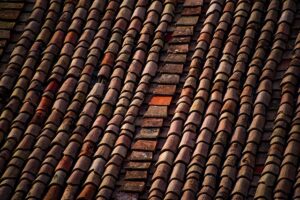Low slope roofing is a functional and cost-efficient design choice for warehouses and large commercial buildings, prioritizing ease of drainage, reduced snow buildup, and improved energy efficiency over traditional sloped roofs. These systems use durable materials like bitumen membranes or metal to withstand weather while strategically managing water flow. Installation requires specialized skills but offers long-term benefits, including lower maintenance costs and increased structural longevity due to efficient drainage.
Low slope roofing is a prevalent choice for warehouses and large commercial buildings, offering a practical and efficient solution for space-saving. This article delves into the world of shallow-pitched roofing systems, exploring their definition, design principles, and diverse applications. We highlight the advantages, from cost-effectiveness to durability.
Learn about the materials used, installation processes, and best practices for maintaining these roofs to ensure longevity. Discover why low slope roofing is a top preference in today’s commercial landscape.
- Understanding Low Slope Roofing: Definition and Basic Principles
- Common Applications: Warehouses and Large Commercial Spaces
- Advantages of Shallow-Pitch Roof Systems
- Materials Used in Low Slope Roofing
- Installation Process and Best Practices
- Maintenance and Longevity of Low Slope Roofs
Understanding Low Slope Roofing: Definition and Basic Principles

Low slope roofing is a term that describes a type of roofing system characterized by its shallow pitch or slight angle. Unlike sloped roofs, which have a more pronounced slope for effective water drainage, low slope roofs are designed with a minimal gradient, often less than 3 degrees. This design is commonly found in warehouses, large commercial buildings, and other industrial structures where functionality and cost-effectiveness are paramount.
The basic principles behind low slope roofing involve ensuring proper roof drainage systems to prevent water accumulation and potential damage. Despite their flat appearance, these roofs incorporate specific sloped design elements to direct rainwater away from the building’s structure. This includes strategic placement of drains, gutters, and downspouts, as well as the use of high-quality materials that can withstand prolonged exposure to weather conditions, thereby ensuring longevity and reliability.
Common Applications: Warehouses and Large Commercial Spaces

Low slope roofing is a popular choice for warehouses and large commercial spaces due to its functional benefits and cost-effectiveness. These structures often require roofing systems that can withstand heavy loads, resist extreme weather conditions, and provide long-term durability. The low pitch or shallow angle of these roofs offers several advantages, including easier water runoff and reduced snow buildup, which are critical considerations for large, open spaces.
In warehouses, low slope roofing allows for wider internal spans without supports, maximizing usable space. It also facilitates the integration of roof drainage systems, ensuring efficient management of rainwater. For commercial buildings, these roofs provide a sleek, modern aesthetic, often complementing the overall design and functionality of the structure. The versatility of low pitch roofs makes them a preferred choice across various industries, catering to both practical needs and architectural preferences.
Advantages of Shallow-Pitch Roof Systems

Low slope roofing systems, often characterized by their shallow-pitched designs, offer several advantages for warehouses and large commercial spaces. One of the key benefits is their cost-effectiveness. These systems typically require fewer materials and labor compared to sloped roof designs, making them a budget-friendly option for businesses looking to minimize initial installation costs.
Additionally, low pitch roofs enhance energy efficiency by providing better insulation against heat gain during warmer months, thereby reducing cooling expenses. They also simplify roof drainage systems, as water flows off more easily, lessening the risk of clogs and other maintenance issues. This design choice contributes to a longer-lasting structure that requires less frequent repairs and replacements over time.
Materials Used in Low Slope Roofing

Low slope roofing systems, as the name suggests, are designed for flat or slightly inclined roofs, typically found in warehouses, industrial buildings, and large commercial spaces. When it comes to materials, several options cater to this specific application. One of the most common choices is bitumen, a type of asphalt, which is often used in combination with fiber glass or polyester mats to create a durable membrane that can withstand various environmental conditions. This material is known for its excellent water resistance and relatively low cost, making it a popular selection for low slope roofing projects.
Another prevalent option is metal, particularly stainless steel and aluminum. These materials offer superior corrosion resistance, ensuring the longevity of the roof. Metal panels are lightweight yet incredibly strong, allowing for easy installation and maintenance. Additionally, modern metal roofing systems incorporate advanced technologies like reflective coatings, enhancing energy efficiency by reflecting sunlight and reducing heat absorption, which is a significant advantage in regions with extreme climates.
Installation Process and Best Practices

The installation process for low slope roofing systems is a meticulous art, often requiring specialized equipment and expertise. These systems, characterized by their shallow pitch, present unique challenges compared to traditional sloped roof designs. The first step involves preparing the substrate, ensuring it’s clean, dry, and free from debris. This foundation is crucial for the long-term integrity of the roof. Professionals then apply a layer of bitumen or polymer-modified asphalt, carefully sealing joints and laps to create a continuous barrier against water intrusion.
Best practices dictate the use of robust drainage systems to manage water flow efficiently. Flashings and caps around roof penetrations, such as vents and pipes, are essential to maintain weatherproofing. Regular inspections and maintenance are vital for low slope roofs, as they can reveal early signs of damage or moisture buildup. Prompt repair or replacement ensures the structural integrity and longevity of these warehousing and commercial spaces’ roofing systems.
Maintenance and Longevity of Low Slope Roofs

Low slope roofing, a prevalent feature in warehouses and commercial buildings, offers unique advantages in terms of maintenance and longevity when compared to steeper sloped roofs. The key to their durability lies in efficient roof drainage systems. These systems are designed to manage water flow swiftly and effectively, preventing water pooling which can lead to damage over time. Regular inspections and cleaning of these drainage systems are crucial to ensure optimal performance.
Unlike steep-pitched roofs that rely on slope for water runoff, low pitch roofs require strategic design elements integrated into the roofing material itself to shed water efficiently. This often includes smooth surfaces, enhanced with coatings or membranes, to repel water. By minimizing water retention, these roofs extend their service life significantly, providing a cost-effective solution for commercial spaces over the long term.
